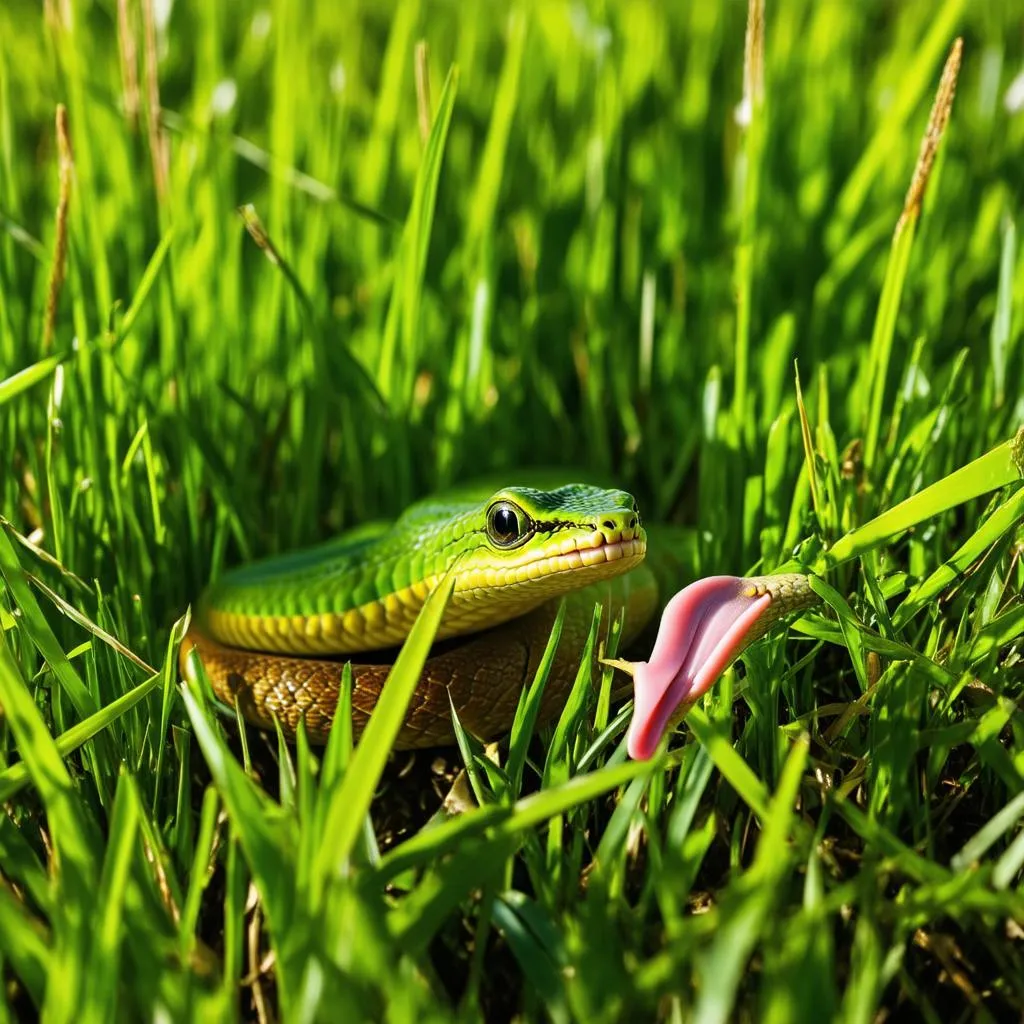Picture this: you’re trekking through the lush rainforests of Vietnam, the air thick with humidity and the scent of exotic blooms. Suddenly, you spot a snake slithering across your path. Your heart skips a beat. How fast can that thing move, anyway?
It’s a question that has fascinated and frightened humans for centuries, often fueled by exaggerated tales and Hollywood special effects. But the truth about snake speed is a bit more nuanced than you might think.
Debunking the Myths: It’s Not a Straightforward Answer
While some snakes can move surprisingly quickly, they aren’t the lightning-fast predators that popular culture often portrays. Unlike animals with legs, a snake’s speed isn’t measured in miles per hour, but rather in body lengths per second. This means their speed is relative to their size and the environment they’re in.
Factors Affecting a Snake’s Speed
Several factors influence how fast a snake can travel, including:
Species: Built for Speed or Stealth?
Different snake species have evolved different hunting strategies, which directly impact their need for speed. For instance, the Black Mamba, found in certain parts of Africa, is known for its agility and can reach speeds of up to 12 miles per hour in short bursts. This makes it one of the fastest snake species in the world. However, most snakes, like the common Garter Snake you might find in your backyard, rely on stealth and ambush tactics, making speed less critical.
Terrain: A Jungle Chase vs. Open Ground
Just like humans, snakes can navigate some environments more easily than others. A snake moving across smooth, open ground will likely be faster than one trying to navigate a dense forest floor or climb a tree.
Temperature: Cold-Blooded Limitations
As cold-blooded creatures, snakes rely on external heat sources to regulate their body temperature. This means their speed and agility are affected by the ambient temperature. In cooler weather, snakes are sluggish and move much slower.
Putting it into Perspective: A Relative Speed Demon
While a snake might not outrun a cheetah, their speed is still impressive, especially when you consider their unique mode of locomotion. For example, a rattlesnake can strike its prey in less than a second – faster than the blink of an eye!
Planning Your Travels? Keep Snakes in Mind
If you’re planning a trip to a snake-populated area like the Mekong Delta in Vietnam (known for its diverse snake population), it’s wise to be aware of your surroundings. Remember, snakes are an important part of the ecosystem and usually only strike when threatened.
 Snake in Grass
Snake in Grass
FAQs About Snake Speed
How fast can a snake bite?
The speed of a snake’s strike is much faster than its travel speed. Some species can strike in under 0.25 seconds!
Are all snakes dangerous?
No, not all snakes are venomous or aggressive. In fact, most snakes will try to avoid contact with humans.
What should I do if I see a snake?
Give it space and do not try to touch it or move it. If you’re concerned about a snake in your yard, contact a local wildlife removal service.
Explore More Travel Tips and Insights
Want to learn more about fascinating wildlife encounters and how to travel safely? Check out these resources:
- How Fast Can Snakes Travel?: link to your internal page
- Planning a trip to the Mekong Delta?: link to your internal page
 Mekong Delta Boat Tour
Mekong Delta Boat Tour
By understanding the truth about snake speed, you can appreciate these creatures for the fascinating reptiles they are and travel with confidence.